Latin name: Cattleya
Category: perennial herbaceous plants
Origin: Central and South America
Cattleya – enchanting extravagance of the obstinate favorite of orchids
Orchids are considered one of the most favorite indoor plants among flower growers. Thanks to the chic multi-colored lanterns, their increasing abundance, they have taken the highest title of the queen of the flower beau monde, which no plant will dare to refute.
At the sight of a room that is decorated with unique foliage and stunning flowers, the thought comes that you are in exotic countries, in the homeland of orchids - in the tropical jungle. These unsurpassed beautifully flowering ornamental crops are assigned the status of favorite greenhouse plants.
At the forefront of this floristic kingdom is the cattleya orchid. And no wonder. The unique configuration of its flowers with a delicate aroma, composed of the most delicate petals of the original color and sepals, in which the edges are decorated with carved fringe, simply fascinates with its individuality. Thanks to hardworking breeders who, based on natural varieties of orchids, created numerous unique indoor hybrids that differ in size, colors, duration of the flowering season, as well as the rest period of the plant.
The main attraction of modern orchid hybrids is their excellent adaptation to ordinary apartment conditions.
This most popular representative of flowering, completely non-capricious indoor plants with its exotic grace will decorate absolutely any place in the apartment. Entrance hall, office, living room, kitchen, bathroom are great areas for this beauty.
Cattleya in Venezuela and Colombia has acquired the status of a national bush, which is used to decorate postage stamps and coats of arms of cities.
Cattleya is a genus of unique orchids organized from perennial flowering herbaceous epiphytic plants, which perfectly occupies a leading position in the Orchidaceae family. This association is represented by about forty varieties of both lithophytic plants growing on rocky areas and epiphytic exotics that ennoble various trees.
In family ties, the Cattleya orchid is with such exotics as phalaenopsis, ludisia, oncidium, paphiopedilum. And also a close relative of the Cattleya orchid is the genus Lelia (Laelia), which is organized by perennial epiphytic and lithophytic herbaceous cultures.
The nineteenth century was a triumphant moment for the appearance of the Cattleya orchid in the territories of European countries. She immediately made a splash with her appearance among amateur flower growers.
By the name of his wonderful flower, he is grateful to the famous financier, gardener from England, William Cattley.
William Swanson was the first to discover a sample of the plant in 1817 and introduced it to Cattley, who imported it, cultivated it with great success – received a magnificent flowering plant in the greenhouse and was the first to provide Europeans with an opportunity to get acquainted with this amazing culture.
The description of this orchid was done by John Lindley. And already in one thousand eight hundred and twenty-four, everyone learned about the emergence of a new genus Cattleya.
The Cattleya orchid is native to Central, North and South America.
The area of distribution of this sympodial herbaceous culture is areas in which a tropical and subtropical climate prevails.
These are forests, savannahs, open and rocky areas. The unique varieties of Cattleya are perfectly suited for an altitude of about 3500 meters above sea level. The Central Cordilleras, especially their eastern slopes, the Caribbean, the Antilles are adorned with this beautiful vegetation.
Cattleya's ancestors grew without connection to the ground cover, being placed on trees or rocks. Tropical air space saturated the plant with moisture and the necessary nutrition.
The cattleya orchid has thick, succulent sympodial stems that perfectly retain water and nutrients. The stems are formed by several pseudobulbs of various configurations. They can be represented by a cylinder, spindle or ball. On a separate pseudobulb there are two or three internodes with two or one inflexible leaflet.
Narrow or oval, long, leathery, fleshy leaf plates have a noble rich green color.
From the number of leaf plates, Cattleya is called:
- Single-leaved – they grow only one leaf from a fleshy, flattened, spindle-shaped pseudobulb.
- Two-leaved – long cylindrical pseudobulbs are a springboard for the appearance of two or three leaves.
Cattleya creeping aerial root system with associated with pseudobulbs. It perfectly adapts to the conditions of existence, which can be trees, mountain rocks. When in contact with the ground, the roots penetrate deep into, but in most cases are from above. This epiphytic plant, due to the abundance of roots, draws nutrients and the necessary moisture not from the ground cover, but more from the air space, because the stems are covered with velomen, a hygroscopic tissue. Over time, dried roots are rejuvenated with brand new specimens.
A distinctive feature of Cattleya from other varieties is the appearance of young shoots from the bases of the stems of the previous year. Due to this process, the bush grows in breadth.
One Cattleya bush usually has four pseudobulbs, which are a great place to bloom flowers. On the apical inflorescences one flower grows, and on the racemose – several flowers at once. Each variety has its own duration of the flowering period, which occurs in spring or in winter. There are varieties that delight with flowering twice a year.
Each species of Cattleya orchid is individual. There are miniature bushes, the height of which does not exceed a barrier of several centimeters, and plants with a meter height. Flowers are five millimeter and reaching twenty-five centimeters.
Cattleya species with photos and names
Cattleya Gubastaya (Cattleya Labiata)
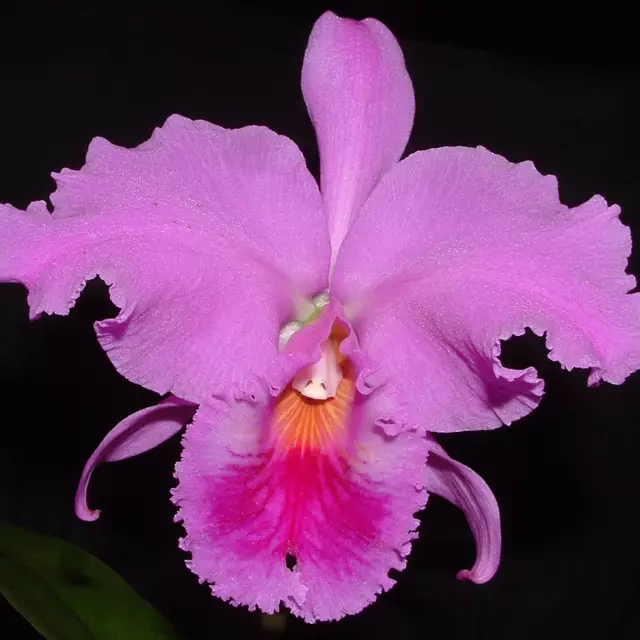 This variety is gaining large spindle-shaped, up to twenty-five centimeters long single-leaved pseudo-bulbs.
This variety is gaining large spindle-shaped, up to twenty-five centimeters long single-leaved pseudo-bulbs.
The bush blooms for a month in the summer with large flowers of light pink or dark purple color, the diameter of which reaches eighteen centimeters with a pronounced purple-pink eight-centimeter lip.
Cattleya mossiae
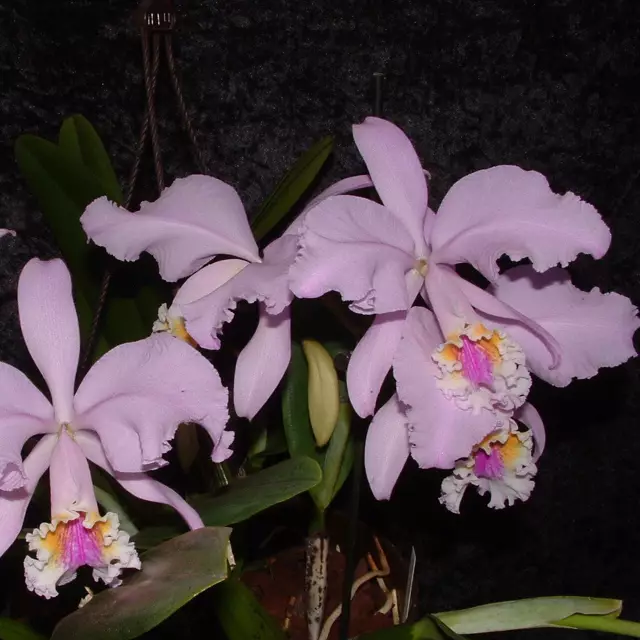 The birthplace of this epiphytic beautiful natural pink-lavender Cattleya is Venezuela. It is also called the Easter cattleya, because it pleases with flowering during the Easter holidays.
The birthplace of this epiphytic beautiful natural pink-lavender Cattleya is Venezuela. It is also called the Easter cattleya, because it pleases with flowering during the Easter holidays.
The places of deployment of these exotic unique ones are tall coffee trees located on a hill from eight hundred to one and a half thousand meters relative to sea level.
A distinctive feature of this variety of Cattleya is the presence of small, single-leaved, cylindrical pseudobulbs with sizes ranging from eighteen to twenty-five centimeters. A bush up to sixty centimeters high is composed of hard, glossy, lanceolate-elongated, dark green leafy plates, the length of which is about twenty centimeters, and the width is up to five centimeters.
This beauty blooms with large, up to eighteen centimeters in diameter, fragrant flowers with a corrugated lip with bright contrasting shades – pink, burgundy, lilac with a yellow center. Wide corrugated sepals, narrow side petals on different bushes have a white, lilac, pink, purple color.
Hybrid Cattleya (Cattleya Hybrida)
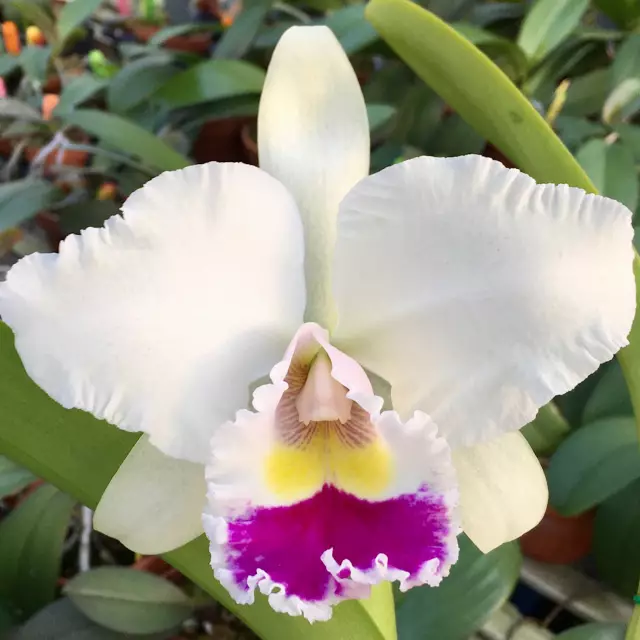 Numerous varieties are obtained on the basis of Cattleya lipped. Culture has high decorative properties. Its lanceolate, hard, leathery leaf plates are green in color. The plant is distinguished by a long flowering period with large flowers, the color range has a very wide range.
Numerous varieties are obtained on the basis of Cattleya lipped. Culture has high decorative properties. Its lanceolate, hard, leathery leaf plates are green in color. The plant is distinguished by a long flowering period with large flowers, the color range has a very wide range.
This amazing indoor flower can reach a height of fifty centimeters.
Cattleya hybrid smartly ennobles winter gardens, showcases of various establishments, florariums.
Cattleya Bicolor
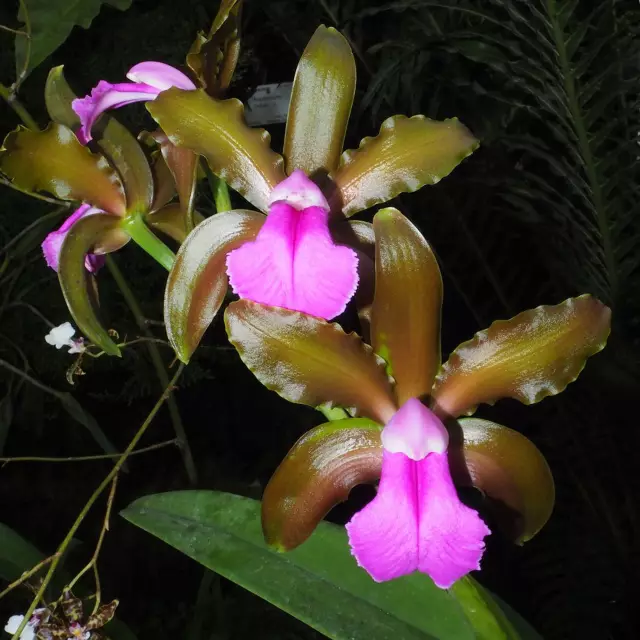 Since one thousand eight hundred and thirty-six years, the two-color cattleya has been a pioneer among the varieties of cattleya in their classification. The height of a flowering bush with medium flowers up to five centimeters can reach sixty centimeters. Five-centimeter flowers are collected from petals of a greenish-brown or orange-brown color. A pronounced purple lip has light edges. Flowering period – from the beginning of autumn to the end of winter.
Since one thousand eight hundred and thirty-six years, the two-color cattleya has been a pioneer among the varieties of cattleya in their classification. The height of a flowering bush with medium flowers up to five centimeters can reach sixty centimeters. Five-centimeter flowers are collected from petals of a greenish-brown or orange-brown color. A pronounced purple lip has light edges. Flowering period – from the beginning of autumn to the end of winter.
The cattleya orchid is a unique exotic with unusual flowers, an airy root system, and unique pseudobulbs. This spectacular appearance allows the plant to be one of the most interesting gifts for exotic lovers. If you want to make a pleasant colleague, relative or friend, you can present Cattleya as a gift or no less unique bushes, which are Echeveria, Ripsalis, Abelia, Lithops, Venus flytrap.
Cattleya care at home
For normal development and obtaining a flowering bush, it must be kept in the conditions to which the plant is accustomed in the wild.
And most importantly, observe and comply with agrotechnical recommendations for this exotic crop.
Choice of location and temperature
The flower should be in areas with bright diffused lighting.
The most acceptable and pleasant window sills for Cattleya will be those that face the southeast or southwest side.
A short exposure to direct sunlight on an adult flower will only benefit. The plant is not accustomed to this situation immediately.
If the orchid is on the windowsill If it is north-facing, it must be pampered with additional artificial lighting using fluorescent or fluorescent lamps.
Assessing the degree of illumination is not at all difficult:
- acceptable lighting parameters – sheet plates have a standard green color;
- weak light – foliage acquires dark green tones;
- an overabundance of direct rays of the sun in the room – the loss of glossy shine of the leaves, they become greenish-yellow in color, followed by lightening and even withering.
Warm off-season Cattleya will be happy to spend on the loggia or glazed balcony.
A houseplant constantly needs fresh air. Drafts for Cattleya are unacceptable.
Temperature indicators directly affect the growth rate and quality of the flowering period of Cattleya. In the warm off-season during the daytime, it is desirable to keep the ambient temperature at 20-25°C, and in the dark period of the day – 17-19°C. During the cold season during the day, we maintain the temperature at 15-18°C, and at night – 12-14°C.
The critical minimum temperature for Cattleya is +5°C, and the maximum is +30°C. Temperature fluctuations of five to seven degrees between night and day are unacceptable. The plant may die.
Humidity and watering
The humidity of the environment is directly related to temperature indicators. Its run-up can fit into the framework from 40 to 70%.
To maintain the level of humidity in the warm off-season, a pot with cattleya can be placed in a tray with water or wet expanded clay. Due to the proximity of moisture, air roots will appear at the bush, which will tend to water.
How often should I water my Cattleya orchid?
The frequency of watering is directly related to the environment of the content and the state of the soil mixture in the flowerpot. The top layer of the substrate should be slightly dry.
During watering, the leaf plates must remain dry to prevent the appearance of dark spots on them.
During the dormant period, the orchid is rarely watered. An actively growing bush, which has a peduncle, increases the frequency of watering. Once a month, loose soil is pampered with a warm shower.
Soil mixture and its top dressing
The substrate for the Cattleya orchid differs significantly from the soils in which Azalea, Geranium, Decembrist, Fern, Violet and other interesting indoor flowers grow.
Ready-made soil mixture for orchids can be purchased at a flower shop. You can individually prepare the composition of the substrate from:
- pine or fir-tree bark – five parts;
- oak leaves, sphagnum moss, coconut fiber, peat, taken one by one;
- polyfoam – two parts;
- expanded clay – two parts;
- charcoal – protection against fungus and other infectious infections.
The bark is soaked in hot water for several days, followed by washing. This procedure will help reduce acidity, so that the roots will be more intensively fed with iron and other useful trace elements. If you miss this moment, the leaf plates will be yellow and quickly fall off.
If you grow cattleya on south-facing windows, you can use coco-soil, which consists of:
- bark of needles;
- oak leaves;
- coconut fibers;
- moss-sphagnum.
The stable structure of coconut fiber allows air to freely penetrate to the root system of the flower. Nutrients in this composition of the substrate are not enough, the plant must be regularly fed.
It is desirable to feed Cattleya with standard orchid fertilizers at intervals of two weeks. An actively growing bush prefers fertilizing with nitrogen supplements. In order for pseudobulbs to form more actively, the presence of potassium-phosphorus components is necessary. Suspend feeding during the formation of buds on the bush – the flowering period will be longer.
The process of fertilizing Cattleya must be combined with watering – there will be more buds, and flowers of larger sizes.
Cattleya transplant
It is not advisable to burden an indoor cattleya with frequent transplants, because the rehabilitation period after this process is quite long. The optimal frequency of transplantation may be an interval of two years with the onset of the growing season.
Urgent moments of transplantation can be:
- excessive growth of a bush in a small flowerpot;
- oxidized soil has become unsuitable for further growth of the bush;
- the roots are covered with rusty spots.
What to do with aerial roots when transplanting an orchid? They need to be rinsed with warm water. Unravel the tangled roots very carefully, the damaged areas must be cut and disinfected.
To transplant cattleya, it is necessary to prepare a brand new flowerpot made of ceramic, glass or plastic with drainage holes at the bottom and sides.
Subsequent transplantation steps:
- Two days before planting, the bush should not be watered.
- Remove the plant from the flowerpot, carry out cleaning activities. To process the place of cuts, we use charcoal powder.
- We cover the bottom in layers with expanded clay, foam plastic, large pieces of bark.
- We expose the bush directly and fill the empty places in the pot with bark.
- Kus the teak must be tied to a support installed in the flowerpot.
- Watering the plant and moving it for seven days is not recommended.
How to understand that the orchid has taken root after transplantation? If you seriously approach the conditions of detention after transplantation, its existence will be positive. The main thing is to comply with the basic wishes of the flower with the provision of growing conditions so that the flower can recover painlessly after the stress. And then the exotic will bloom magnificently and delight its owners with this beauty.
How to propagate a cattleya orchid?
You can get a young cattleya:
- dividing the pseudobulbs;
- division of the root system;
- sowing seeds.
The seed method is time-consuming and time-consuming, requires a lot of experience. It is used by experienced professionals. Acceptable areas for this procedure are greenhouses and greenhouses. When growing cattleya from seeds, special sterility must be observed.
Pests and diseases
A tropical beauty in violation of the conditions of detention can survive the appearance of unexpected insects in the form of:
- spider mites;
- aphids;
- scale insects;
- mealybugs.
To prevent these misunderstandings, leaf plates and pseudobulbs on a bush are periodically inspected from the back. If you find uninvited guests, you should try to wash them off using a warm shower. Then you can use a solution of soap or alcohol.
If these procedures did not bring the desired results, it is urgent to turn to insecticidal preparations in the form of Actellik, Aktara, Phytoferm.
Difficulties encountered in growing
- How to make Cattleya bloom? Why isn't Cattleya blooming? The plant must be provided with good lighting, an acceptable temperature.
- Brown spots or stripes have formed on the leaves – a spider mite may appear on the bush. If there are no insects, then this is a natural aging process. Such leaves are removed.
- Uneven growth and formation of leaf plates – the irrigation process needs to be corrected.
- Pseudobulbs covered with dark watery spots – the plant is too cold or the room has high humidity.
- Why does an orchid drop flowers? Maintenance problems – the presence of pests, a change in location, punctures with soil, insufficient lighting, temperature failures, irrigation failures, low air humidity.
- White or light yellow leaves covered with red spots – an excess of sunlight.
- How fast does Cattleya grow? Under conditions with good lighting and high –quality top dressing, the bush is gaining full growth within five months.
- How does an orchid shoot an arrow? The correct formation of peduncles is carried out in the axils of the leaves. If the point of growth has become the place of appearance of the peduncle, the bush will not grow higher.
- The orchid grows leaves and does not bloom – an exotic tropican needs to restore the natural rhythm of maintenance close to natural.
- What to do with orchid roots that come out of the pot? It is necessary to normalize the care of the orchid. The soil should dry out completely between waterings. Cattleya needs to be provided with comfortable lighting, which will allow the bush to strengthen immunity. Pruning of healthy roots is not necessary.
Love your Cattleya, fulfill all her wishes and she will be an exotic interior decoration for many years.
Other interesting cultures can be found on the site if you open the catalog of indoor plants from a to z.




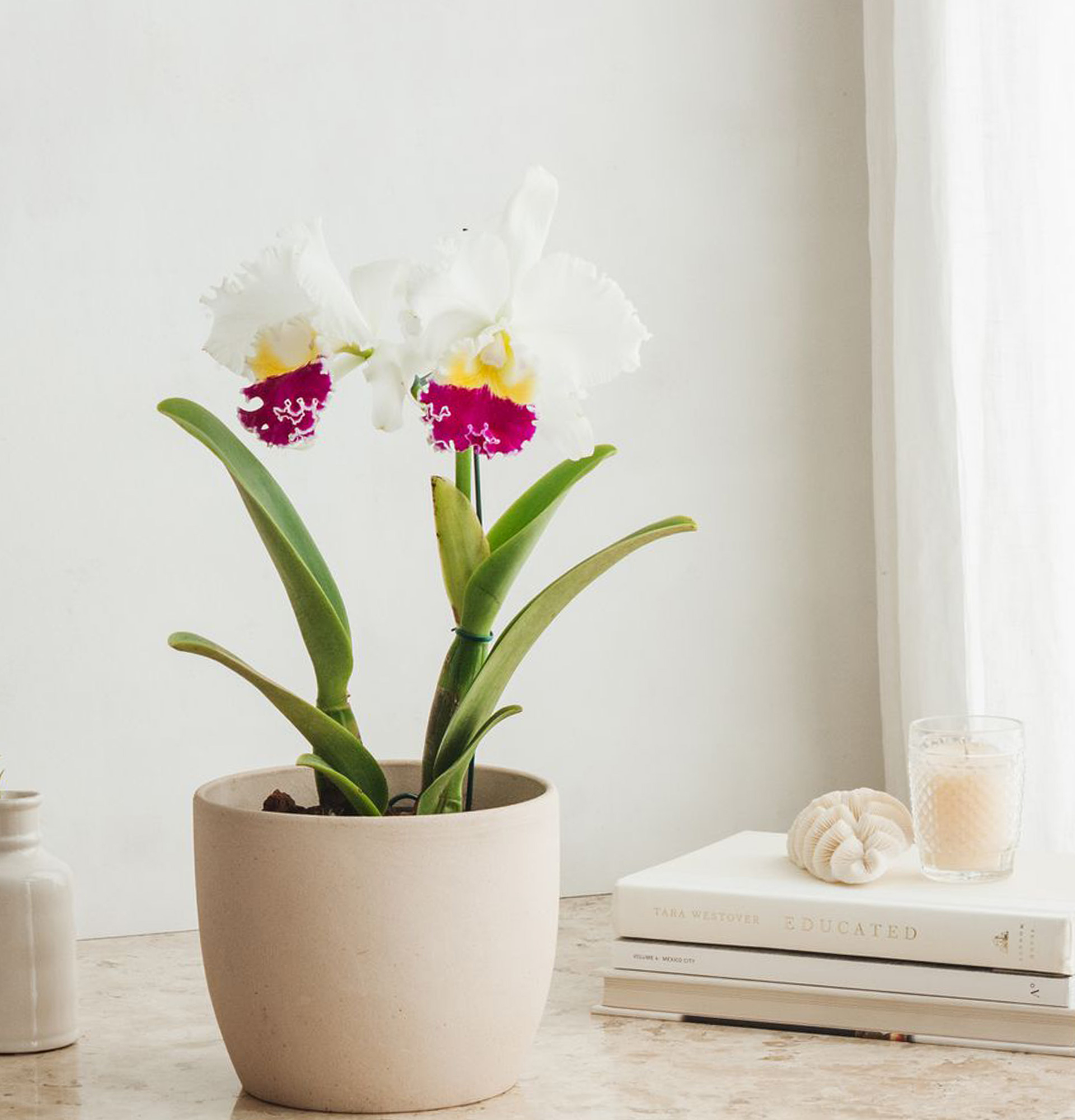










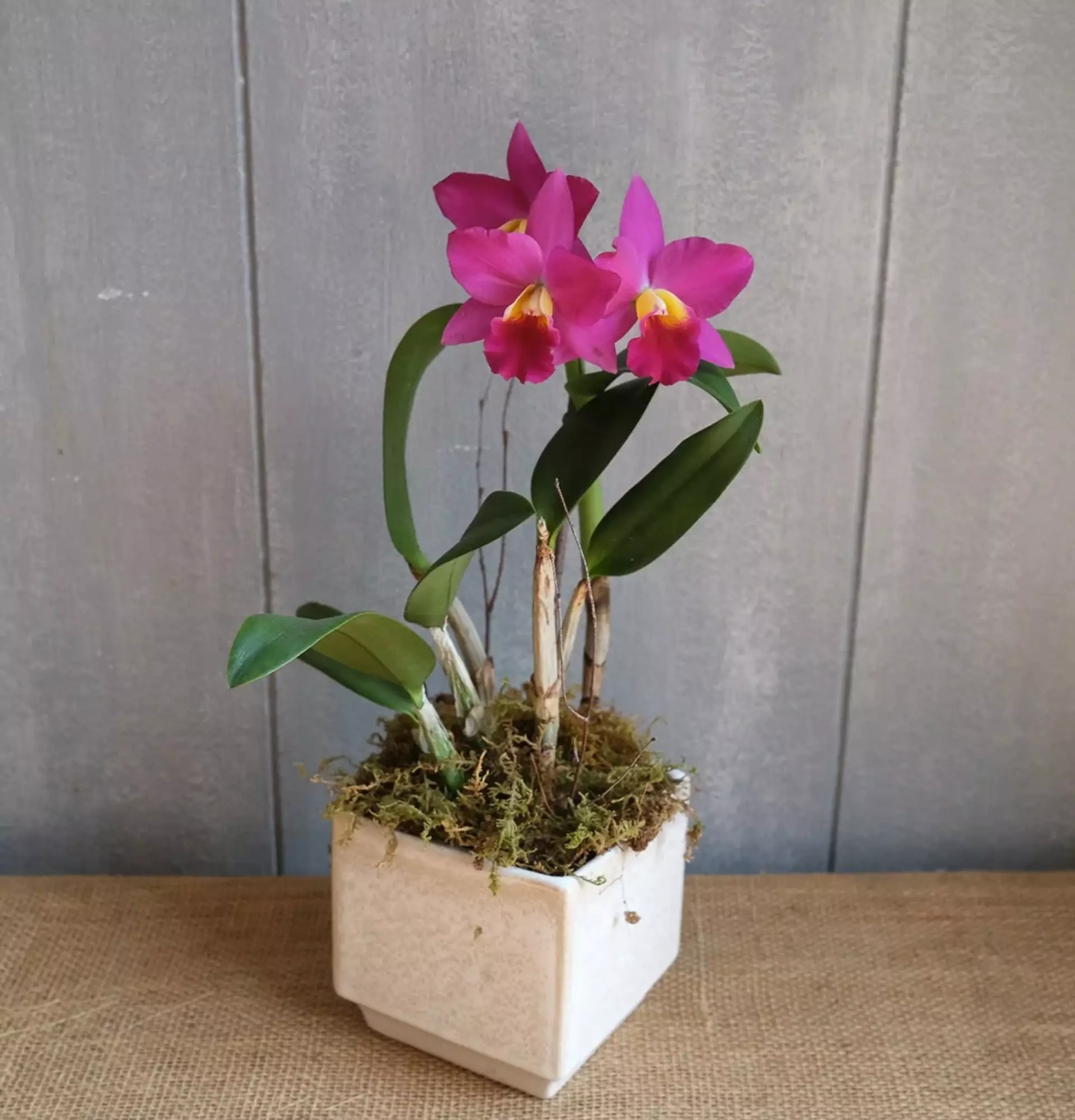
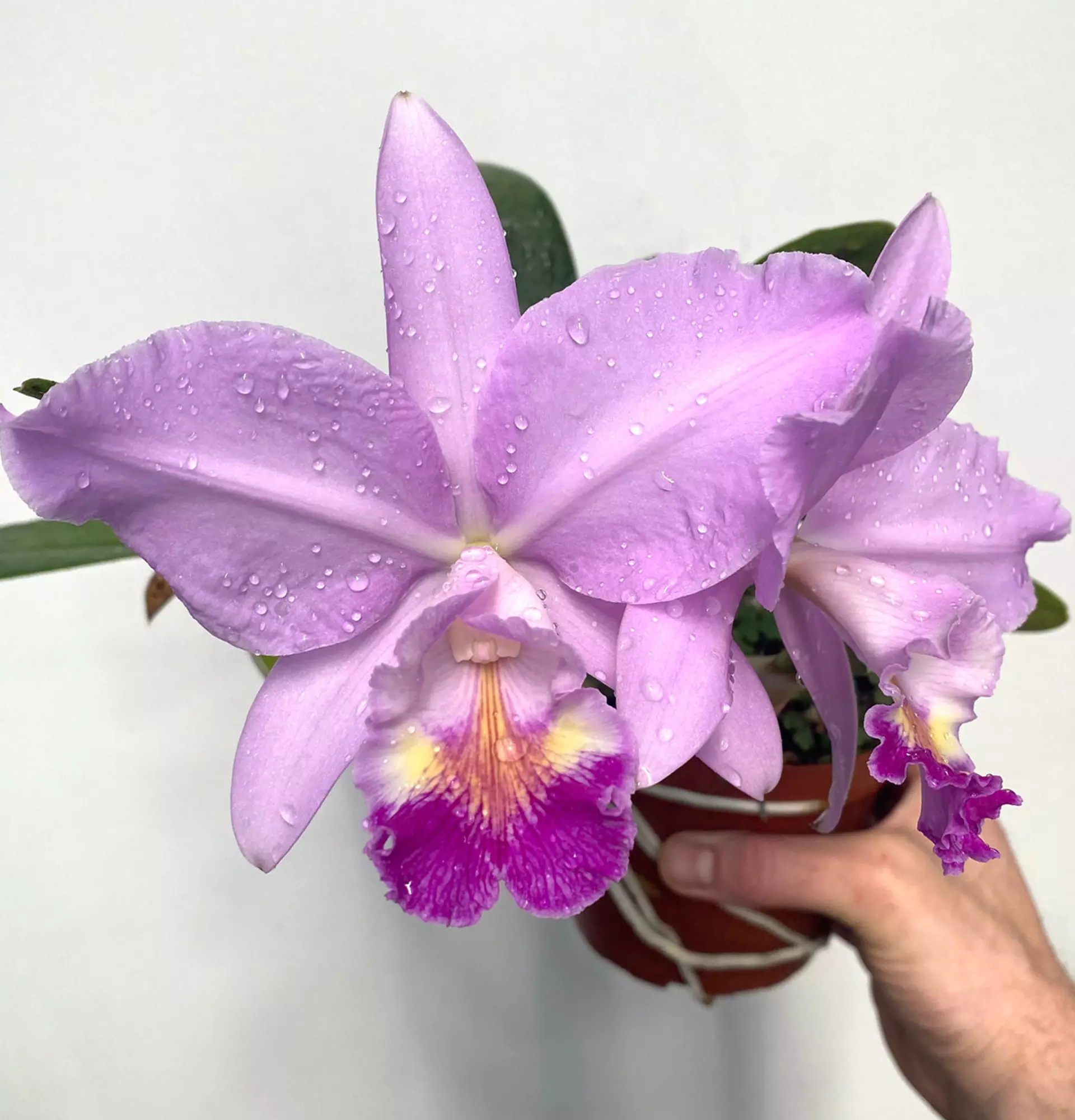
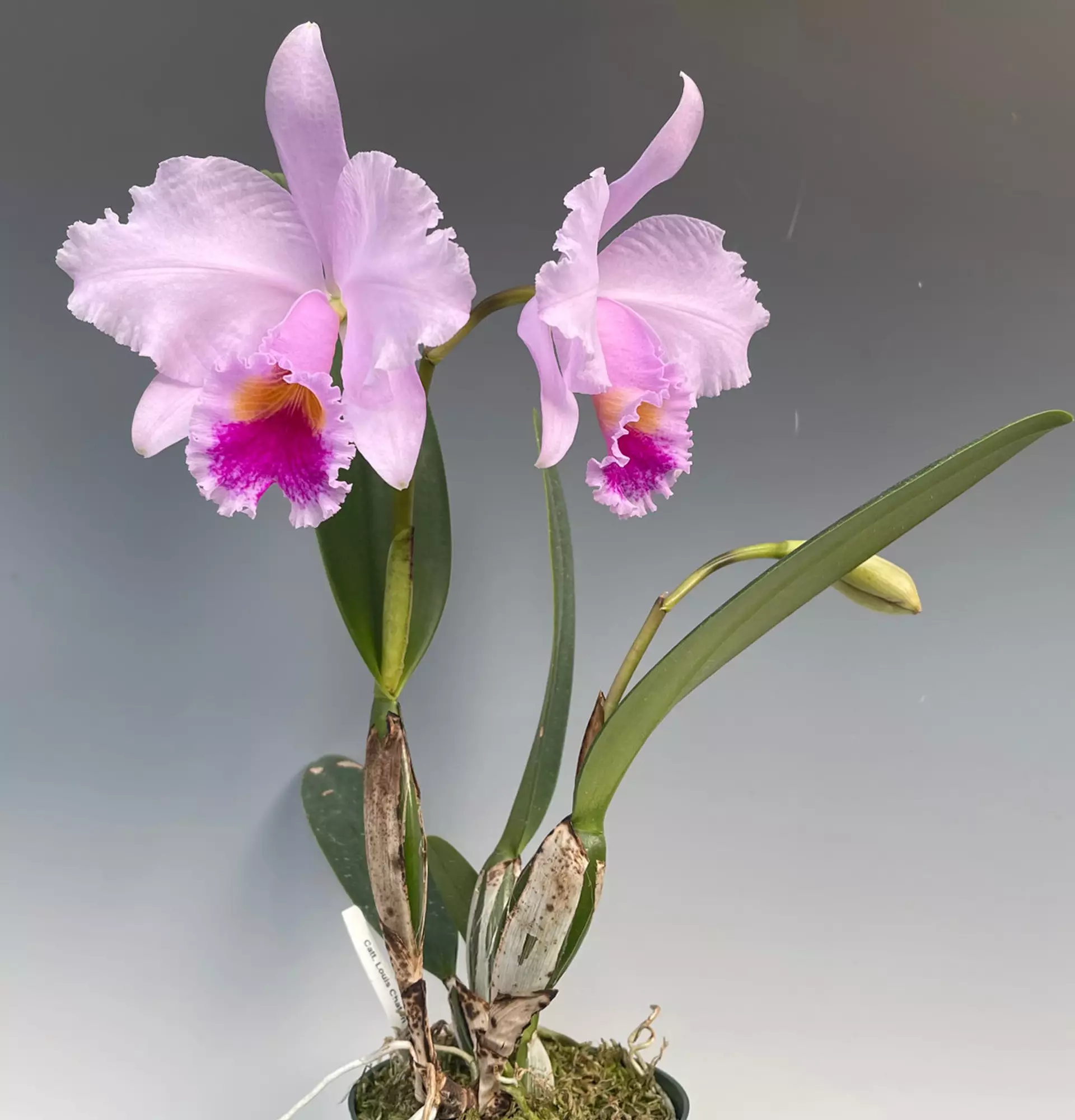
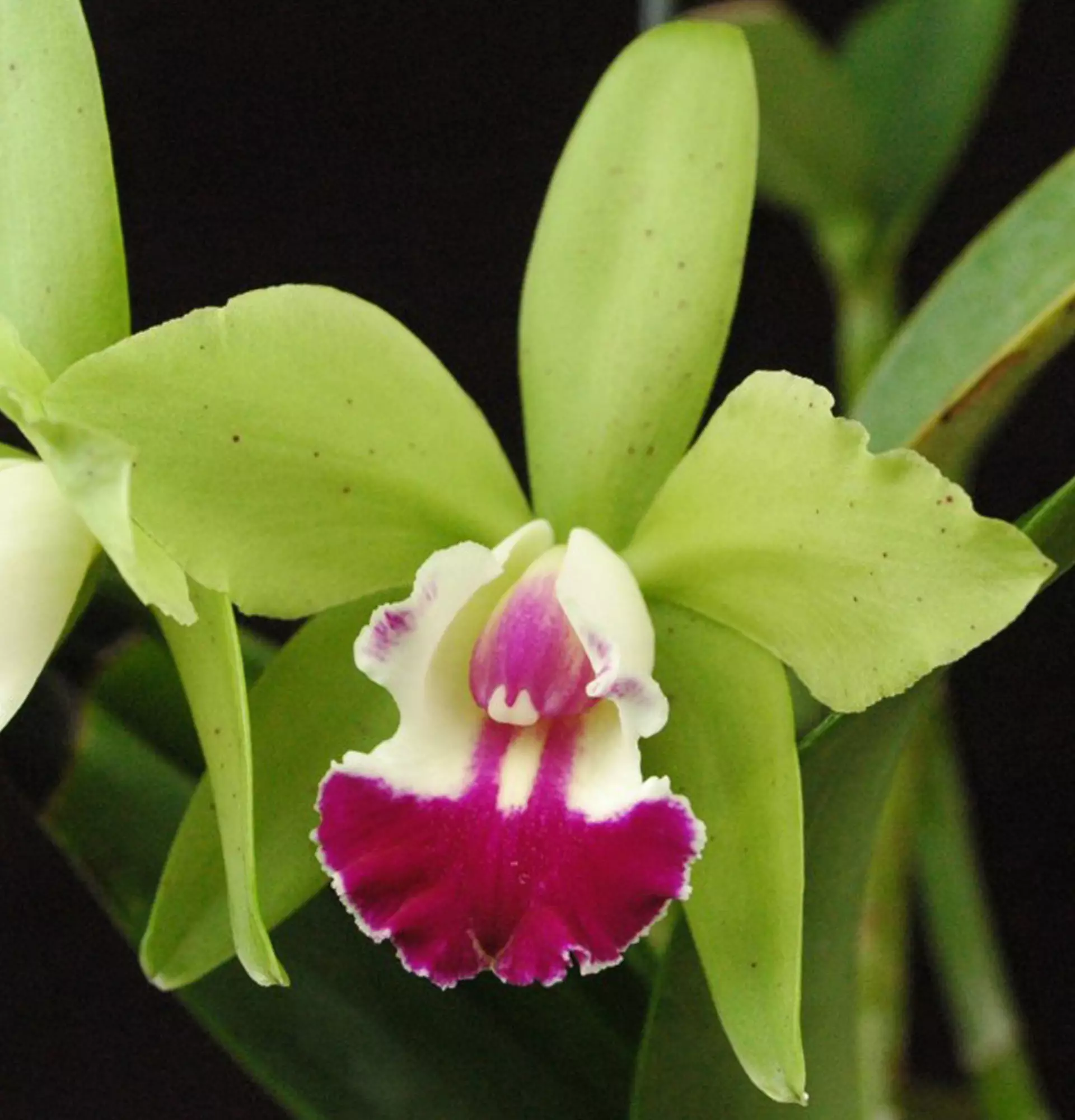
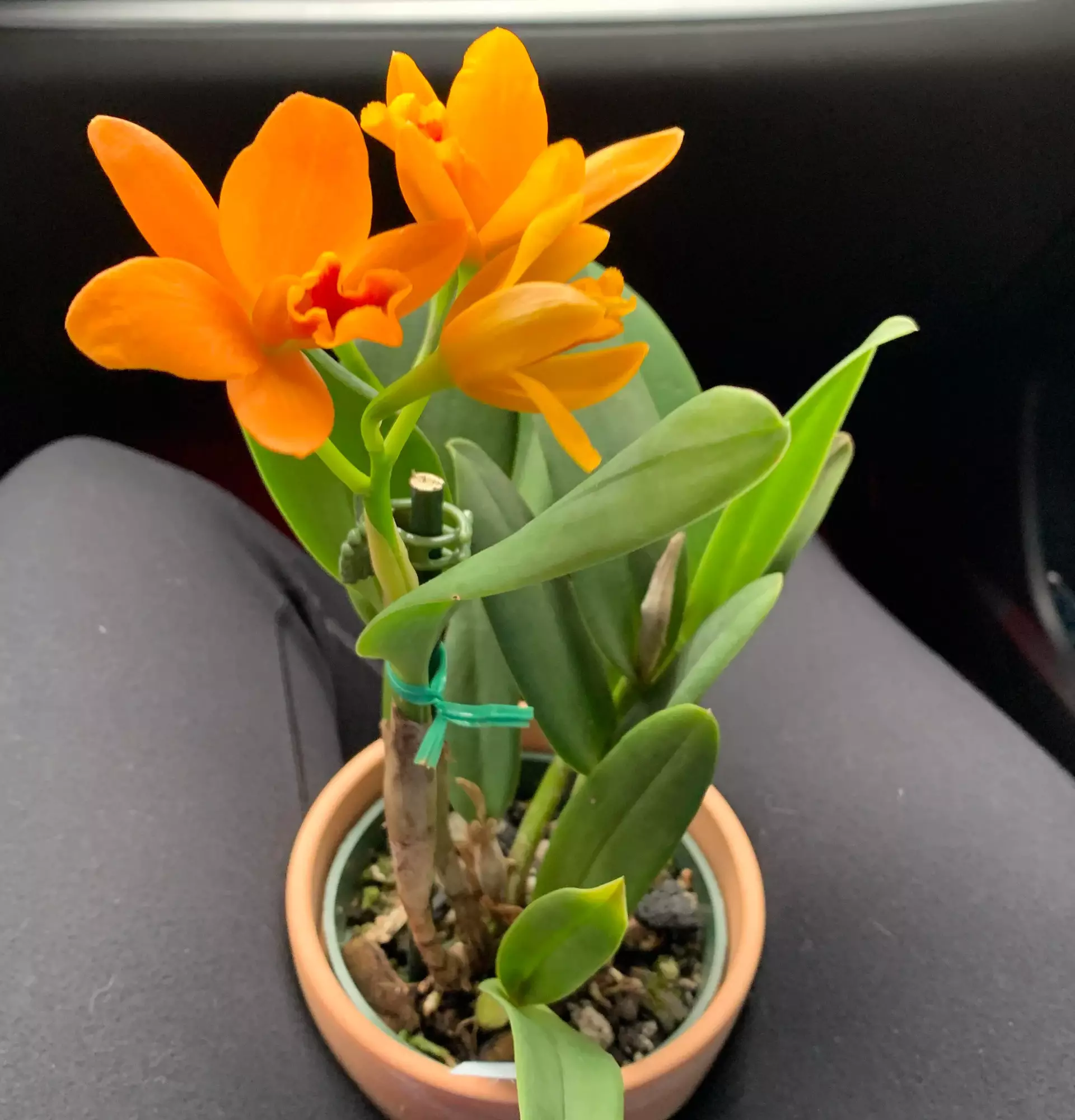
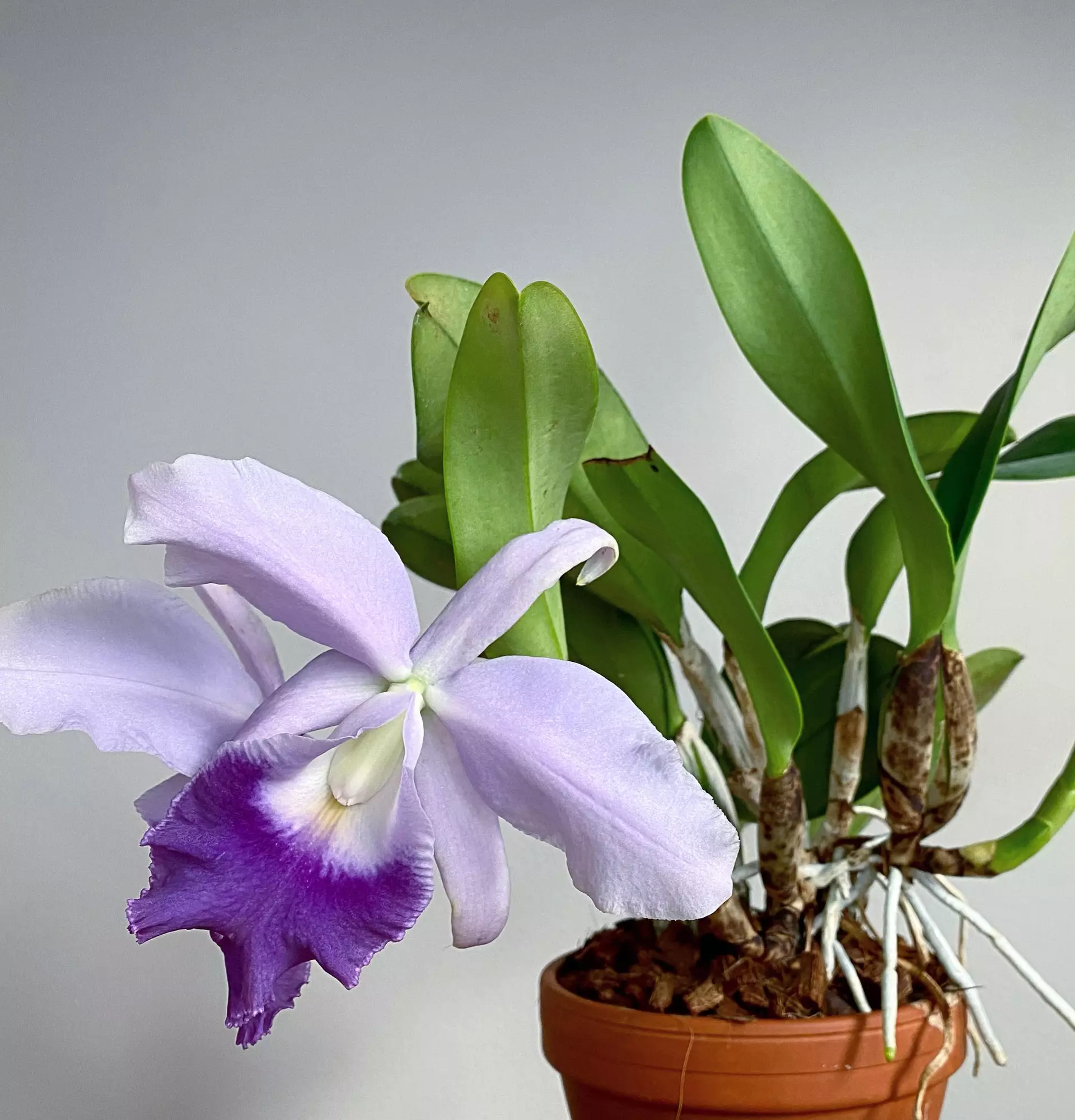
Write comments
Comments